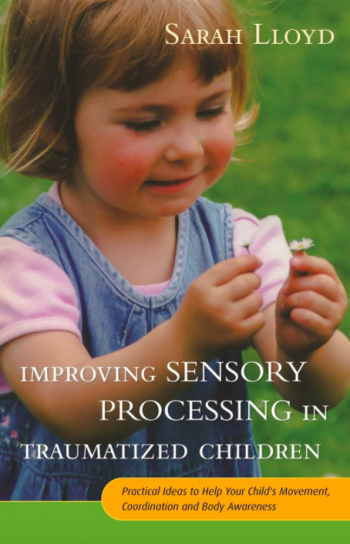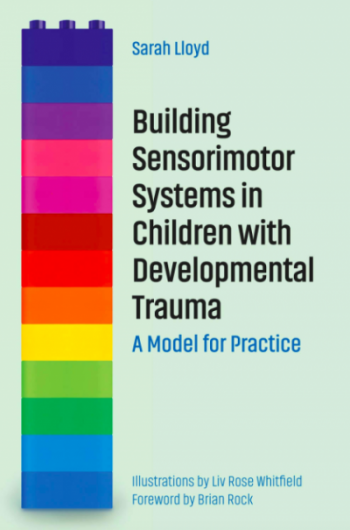
All BUSS® clinical work uses before and after measures to review efficacy. These include the BUSS® screening tool, Strength and Difficulties Questionnaires, Goal Based Outcomes and children’s human figure drawings.
As an innovative methodology, we are keen to develop research around BUSS®. As such, we’ll usually ask if you’re happy to be involved in any research programmes that are being undertaken at that point. A decision to participate or not to participate has no bearing on treatment.
Below is a summary of the research. Alternatively, to download a PDF summary of this research, please click here.
2018/2019, Katherine Grindheim, Second Year Clinical Psychologist in Training at Leeds University – Service Evaluation Project entitled: ‘The BUSS® Programme – an evaluation of the experience of foster carers and social workers.“
In this project, Kat used a qualitative methodology to explore the participants’ experiences of the BUSS® programme. These were face-to-face interviews with 5 foster carers and 5 Social Workers working in the Therapeutic Social Work team in Leeds where the intervention was being delivered.
Key themes that emerged from the project were:
The full evaluation project is available here.
2020, Harriet Haslam, Senior Practitioner, Social Work, as part of a Masters at University of Huddersfield – Innovations in Professional Practice, understood a study entitled: ‘An exploratory study of the impact of the BUSS model on the therapeutic skills set of carers.‘
In this study, 4 foster carers who had completed the BUSS® intervention with the children they were caring for were interviewed. The findings of this research were that participation in BUSS® enabled the carers to better understand the neurosequential impact of trauma, which in turn improved their ability to interpret the physical and emotional presentation of the children, leading to more attuned caregiving. A key component in this was the carers role as the main agents of change in the intervention, which strengthened the carer–child relationship and increased the foster carers’ feelings of self-esteem, because they could see tangible changes and link these to the work that they’d been doing.
2021, Chloe Robinson – Third Year Clinical Psychologist in Training, at the University of Hull undertook her doctoral thesis entitled: ‘Learning from adoptive families: What are their experiences of children’s development and the support they receive?‘
Results were divided into 4 key themes:
Working with 10 adoptive families who had been through the BUSS® programme. The full dissertation is available here.
2021, Natalie Jones, Second Year Clinical Psychologist in Training at the University of Leeds, undertook a Service Evaluation Project (SEP) over one year, entitled: ‘An evaluation of the LEAPlets programme an interagency school readiness programme for children who are looked after based on the BUSS® model.‘
In this project, Nat interviewed 8 foster carers, all of whom were carers for children aged between 3 and 5 years old. Nat used a qualitative methodology, and grouped findings into 3 themes:
Another theme that emerged from this SEP was carers wanting to know more and wanting to be able to carry on the work at home in a way that was more targeted to their individual child. Therefore, as a result of this SEP, we arranged to write programmes for carers and children to carry on at home.
The full evaluation project is available here.
2022, Danielle Smith, Second Year Clinical Psychologist in Training at the University of Leeds, undertook a one-year Service Evaluation Project (SEP) on the BUSS® group for new adopters and their children.
This study used a qualitative design involving semi-structured interviews with 7 adoptive parents who had attended the Early Years BUSS® group-work programme. Questions focused on parents’ experiences of the group, changes in their child / children’s sensorimotor systems, and the role of the BUSS® groups in early adoption family life.
The results showed that adopted children attending the BUSS® group experienced significant improvements in their sensorimotor systems and social and emotional development, had a mostly positive experience of the group, and felt the group was beneficial in early adoption family life.
Parents described several benefits of the BUSS® group for themselves, their children, and for their relationship with their children. 4 parents described that the group had helped develop their relationships with their children as it provided dedicated family time together each week, and opportunities for bonding and strengthening attachments. Parents also described how the group had been very validating for them in confirming their observations of their child/children’s sensorimotor difficulties, and how they had benefitted from the acceptance and understanding of other adoptive parents in the group.
Valuable suggestions were also offered by participants on how to improve the group. These included providing brief explanations at the start of each activity to remind parents which areas / systems the activity is targeting, and providing explanations of how activities could be done at home.
The full evaluation project is available here.

By Sarah Lloyd (2016).
This is a good starting point in learning the model. It is written to be especially useful for foster carers, kinship carers, special guardians, and adoptive parents.
This can purchased from CairnsMoir, Amazon, or JKP Books.
By Sarah Lloyd (2020).
This book provides a more in-depth understanding of the BUSS model. Brian Rock, Dean of the Tavistock Clinic, wrote in the book’s foreword:
“She brings concepts and ideas together, drawing on what appear to be antithetical traditions, in the service of providing an accessible and effective set of interventions that make a real difference to people’s lives. Here there is much innovation and development for which we should be grateful.”
This can purchased from CairnsMoir, Amazon, or JKP Books.


By Sarah Lloyd (2023). Published in Adoption & Fostering.
https://doi.org/10.1177/03085759231174902
Adoption & Fostering is a quarterly peer reviewed journal which has been at the cutting edge of debate on childcare issues for over 50 years. As the official journal of the CoramBAAF Adoption & Fostering Academy, the UK’s leading adoption and fostering charity, the journal supports CoramBAAF’s aims of promoting the highest standards of practice in adoption, fostering and childcare services, to increase public understanding of the issues and to provide an independent voice for children and families, disseminating new research and practice developments, informing and influencing policy-makers, all those responsible for children and young people, and public opinion at large.
Sarah has also joined the Adoption & Fostering Journal for ‘An Introduction to the BUSS Model with Sarah Lloyd’, Episode 5 of their podcast. You can listen here!
These resources all cover working with Developmental Trauma, Attachment, and Building Relationships, and may be of interest. Here are some books:
Booth, P. (2009). Theraplay: Helping Parents and Children Build Better Relationships through Attachment Based Play. Jossey-Bass
Gerhardt, S. (2014). Why Love Matters: How Affection Shapes a Baby’s Brain. Routledge
Golding, K. and Hughes, D. (2012). Creating Loving Attachments: Parenting with PACE to Nurture Confidence and Security in the Troubled Child. Jessica Kingsley Publishers, London and Philadelphia
Guerney, L. and Ryan, V. (2013). Group Filial Therapy: The Complete Guide to Teaching Parents to Play Therapeutically with their Children. Jessica Kingsley Publications
Hughes, D. and Baylin, J. (2012). Brain – Based Parenting: The Science of Caregiving for Healthy Attachment. New York, NY: W.W. Norton & Co
Hughes, D.A., Golding, K.S., Hudson, J. (2019). Healing Relational Trauma with Attachment Focused Interventions. WW Norton, NY and London
Perry, B. (2006). The Boy Who Was Raised as a Dog. Basic Books
Here are some online resources:
In Brief: The Impact of Early Adversity on Children’s Development. This is a very readable overview, with picture and an accompanying video. Click here to access this.
The Beacon House website – a fantastic collection of brilliant resources, information and advice for children, families and schools. Click here to access it.
The Beacon House video on Window Of Tolerance can be found here
The Child Trauma Academy website, which has lots of good resources. Click here to access it.
They also have other resources, including videos, such as The Human Brain videocast by Bruce Perry (2013) as part of their Seven slide series. Click here to watch it.
Ruby Jo Walker has some excellent resources on her website. I think this resource on Polyvagal theory that manages to have both the essence of it but put it in a simple form is really useful. Click here to access it.

Here are some resources to do with Child Development that I think are useful. Firstly here are some books:
Murray, L. and Andrews, L. (2000). The Social Baby. CP Publishing, Richmond, Surrey, UK
Music, G. (2011). Nurturing Natures: Attachment and Children’s Emotional, Sociocultural and Brain Development. Psychology Press
Sharma, A. and Cockerill, H. (2014). Mary Sheridan’s from Birth to Five Years: Children’s Developmental Progress. Routledge
Tredgett, S. (2015). Learning through Movement in the Early Years. Critical Publishing
Here are some online resources:
There are some great websites developed by Children’s OTs, outlining ages and stages of development and with lots of useful links and ideas. I find these two especially useful- click here to access the “mama OT” website and click here to access the “CanDoKiddo” website.
The First 1001 Days Movement website has some really good resources about early development. Click here to access it.

Training in sensory integration therapy is open to Occupational Therapists and Physiotherapists. More information is available on the sensory integration website – www.sensoryintegration.org.uk. Most books about sensory integration describe sensory processing disorders and their treatment. If you are interested in finding out more about this, these books are popular and provide an introduction to the subject.
Ayres, Jean A. (2005). Sensory Integration and The Child (25th Anniversary Edition). Western Psychological Services
Bhrethnach, E. and Bhrethnach, S. (2011). The Scared Gang. Alder Tree Press
Kocsinski, C. (2017). Sensorimotor Interventions. Arlington, TX; Future Horizon Incorporated
Lane, S.J. and Schaaf, R.C. (2010). Examining the Neuroscience Evidence for Sensory-Driven Neuroplasticity: Implications for Sensory-Based Occupational Therapy for Children and Adolescents. American Journal of Occupational Therapy, 64, 375-390. https://doi.org/10.5014/ajot.2010.09069

These are some books for younger children which are a combination of a great story and also have lots of animals in them – perfect for all that crawling, commando crawling and bear walking!
Campbell, R. (2010). Dear Zoo. MacMillan Publications
Carle, E. (1994). The Very Hungry Caterpillar. Puffin Books
Donaldson, J. (2017). The Gruffalo. MacMillan Publications
Donaldson, J. (2018). The Snail and The Whale. MacMillan Publications
Donaldson, J. (2017). A Squash and a Squeeze. MacMillan Publications
Rose, M. (2015). We’re going on a Bear Hunt. Walker Books
Voake, C. (2008). Ginger. Walker Books

If you would like to search for anything on our website, please type here and click ‘search’